West Grinstead was a railway station on the Steyning Line which served the village of West Grinstead. It had a goods yard with a cattle loading bay and facilities for handling horse boxes. With hunting dog kennels and national stud based in the area, the station saw substantial horse traffic.
The station closed as a result of the Beeching Axe in 1966 and now forms part of the Downs Link
footpath. Although the main station buildings were demolished soon
after closure, the station platforms have survived, along with some of the original track (with a bit of close examination).
The local parish council have erected a replica station sign in the vicinity, and an old railway signal has also been installed, but look a little deeper in the undergrowth and the real history shines through.
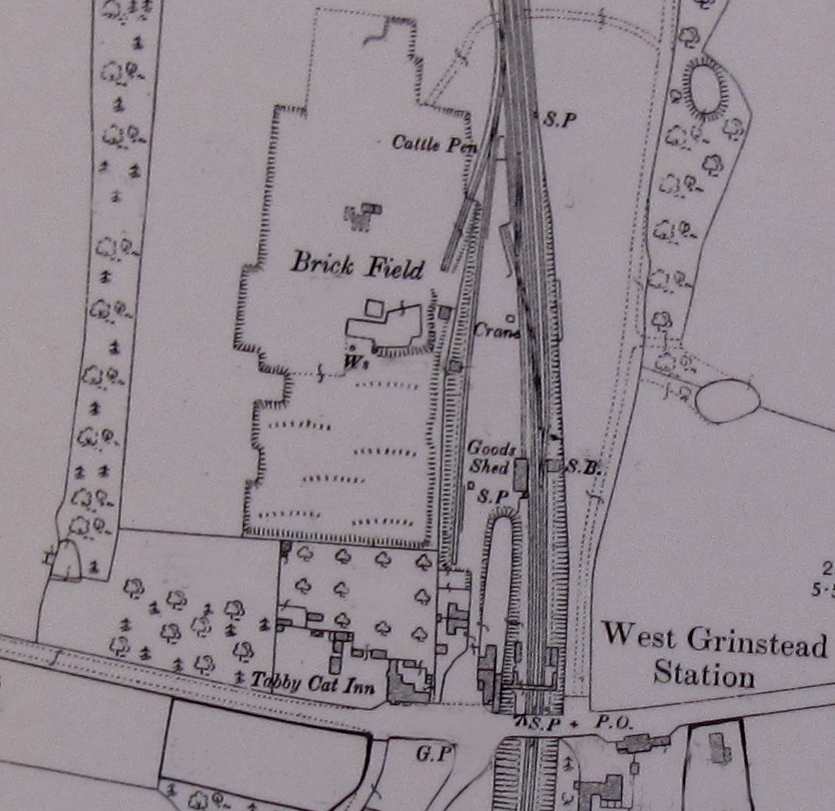
ABOVE: Map of the site investigated. The station is in the bottom left corner and the track work we found hidden in the undergrowth (more on this later) leads to the Cattle Dock and Goods Shed.
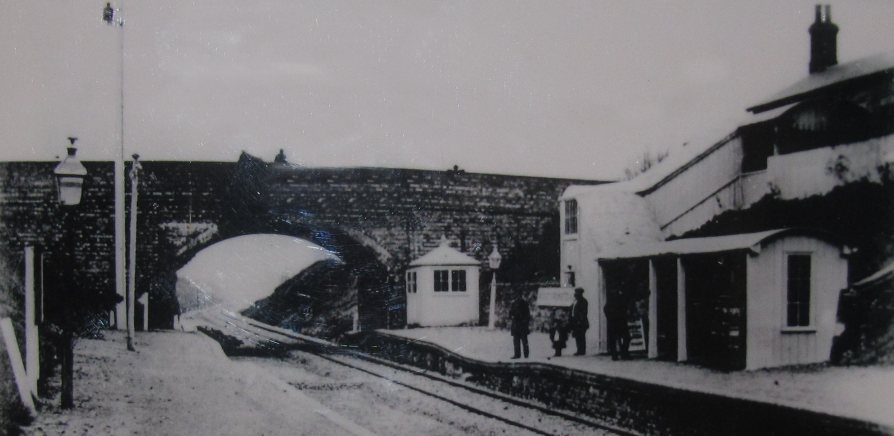
ABOVE & BELOW: The West Grinstead railway station was opened on
1st July 1861 and this is the earliest photograph I have seen (early 1860s) ....
before the footbridge was built. (Looking south). The
photograph BELOW was taken a bit later and shows the changes made to the station layout and entrance to the footbridge. Both these photos can be seen in their original context at http://www.findonvillage.com/0264_findon_sheep_fair_during_the_war.htm
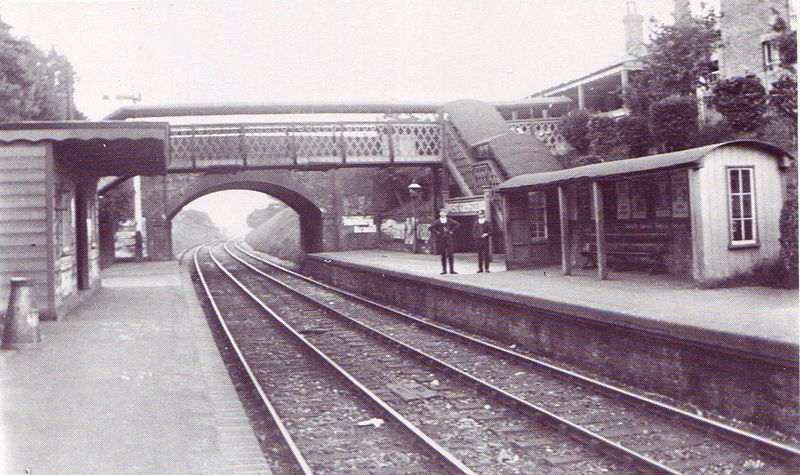
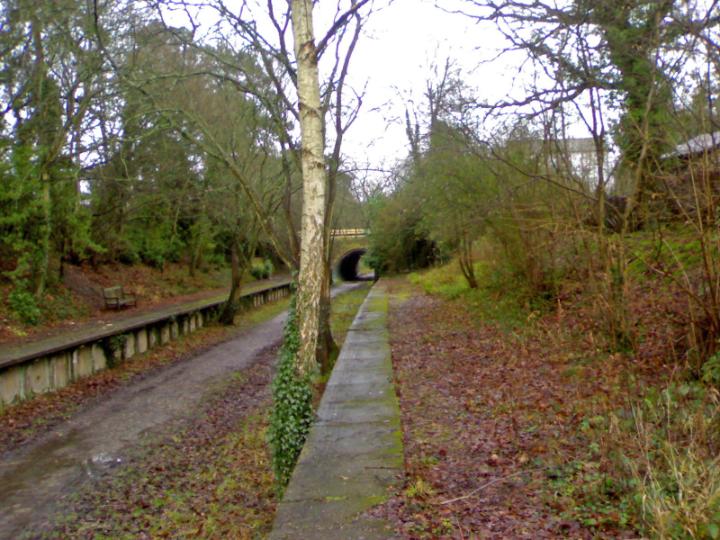
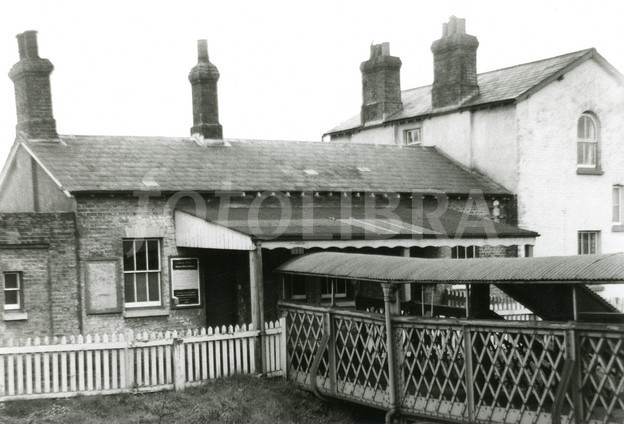
ABOVE & BELOW: These views show the rear of the station building and the start of the footbridge across to the platforms in 1966, just before decommissioning and subsequent demolition. The original pictures are owned by Mr. Roger Kennett/Fotolibra and appear here for personal research and historical comparison / illustration purposes only. See them in their original context at http://www.fotolibra.com/gallery/663229/footbridge-at-west-grinstead-station/
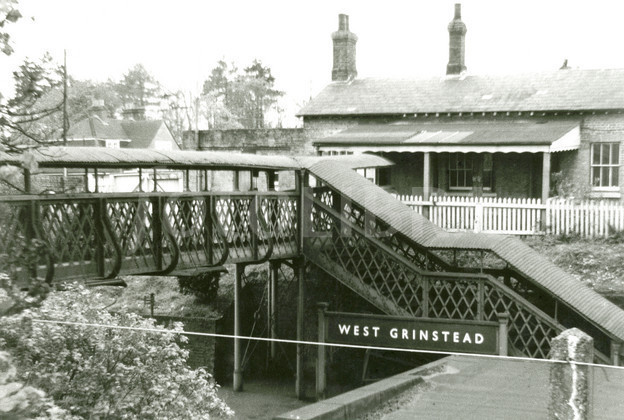
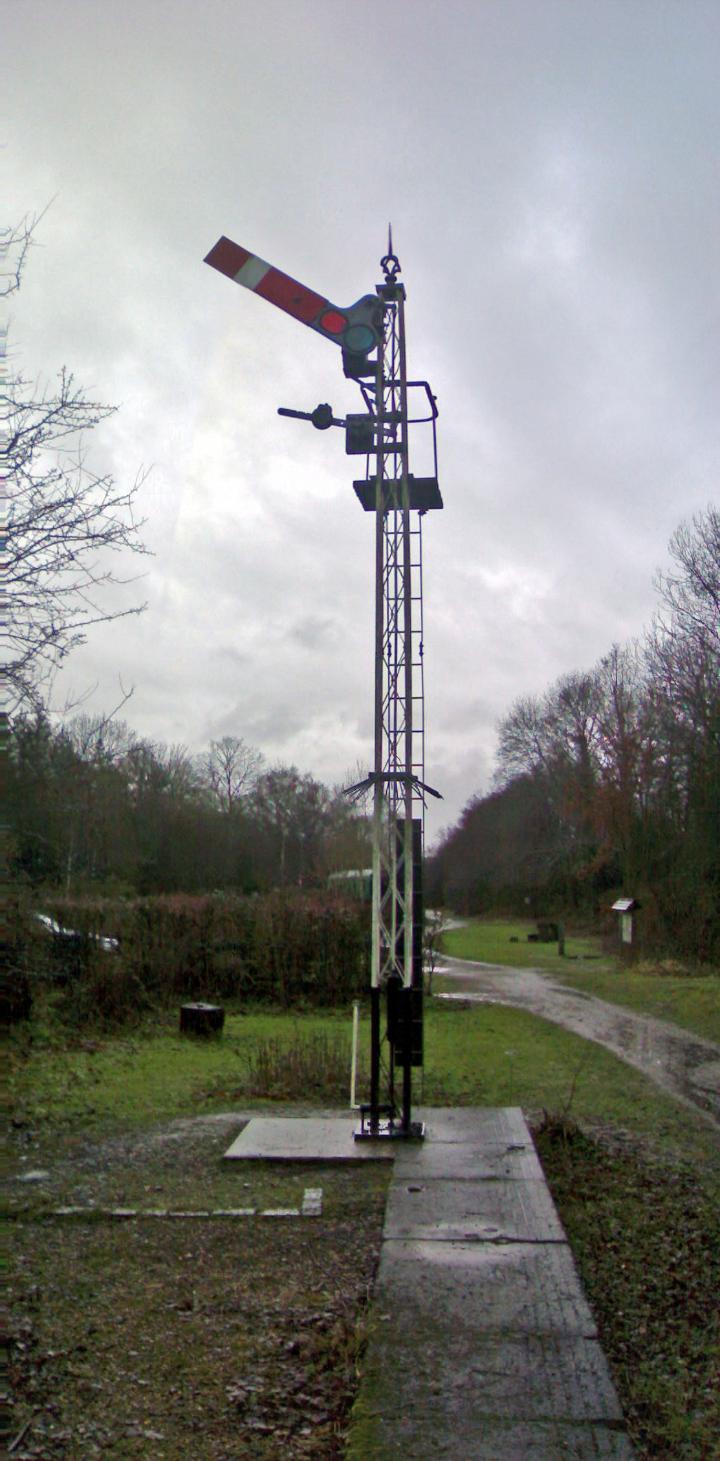
ABOVE: Although very similar signals would have existed at the station originally, the one seen here in the present day is in fact a later addition placed as a reminder of how things once were.
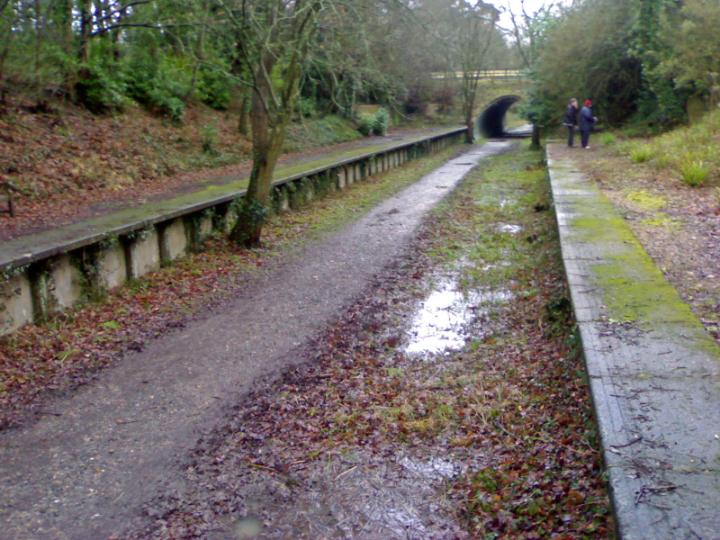
ABOVE & BELOW: Although the 2 views are taken from opposite platforms, they show a similar view looking due south and how little we have to work with, when it comes to locating what used to be where. The road bridge, incidentally, has been rebuilt and the portal in the present day is just a metal pipe rather than the original brick built one. There's room to get a couple of bikes under the road, but the halcyon days of steam passing under the road are sadly long gone now.
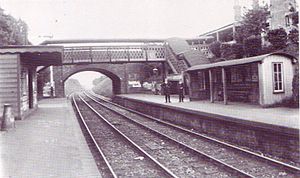
BELOW: This section of wall peeping out from the undergrowth shows the edge of the track that went to the Goods Shed, behind the Tabby Cat Pub. The railway carriage has been set up as a kind of nature & wildlife resource centre, but the style of the carriage came a lot later than would have operated at this location. It's a nice idea, though.
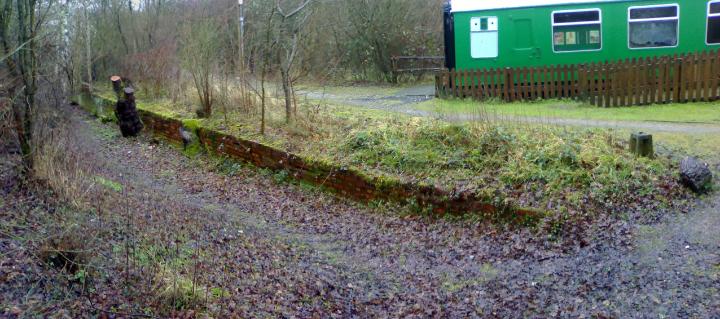
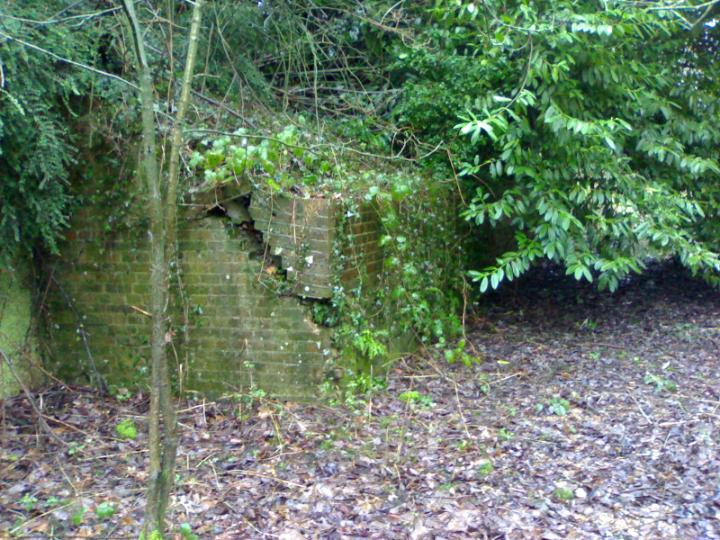
ABOVE & BELOW: The little brick retainer seen above is now starting to come apart with the ravages of time, but is clearly seen in Findon Village's fantastic photo BELOW, just behind the bench.
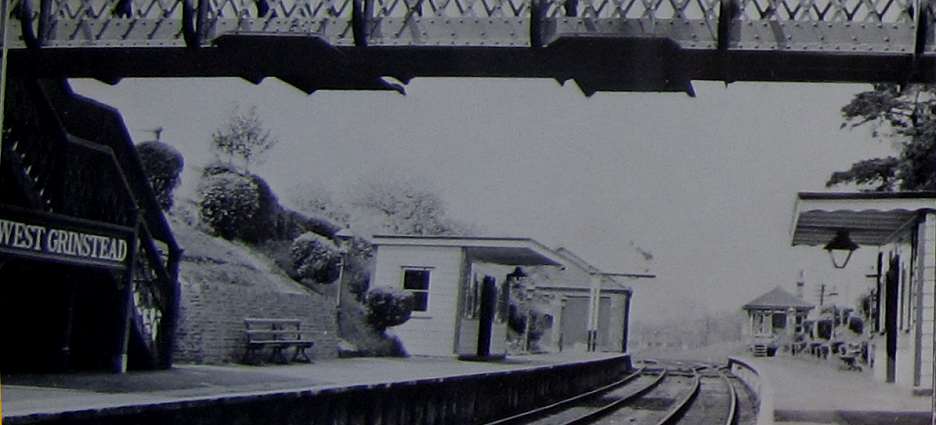
BELOW: The two photos shown BELOW indicate the location of what was originally one of the waiting rooms - the wooden clad building seen on the left of the photo ABOVE.
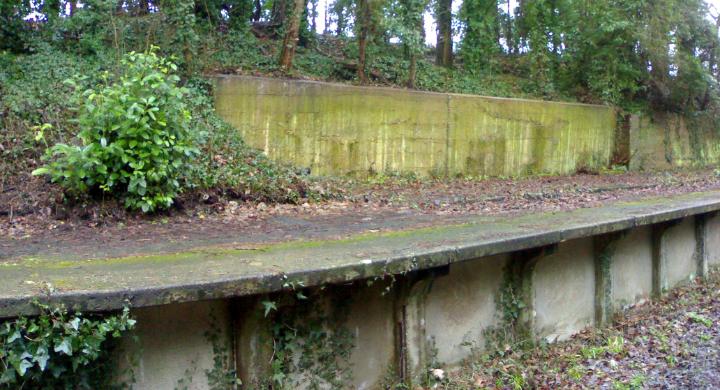
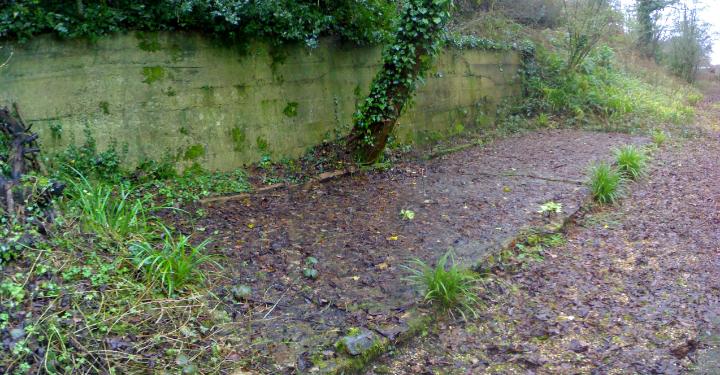
BELOW: The tunnel under the road. Yes, a concession made to the original, but no character and a poor replacement really...
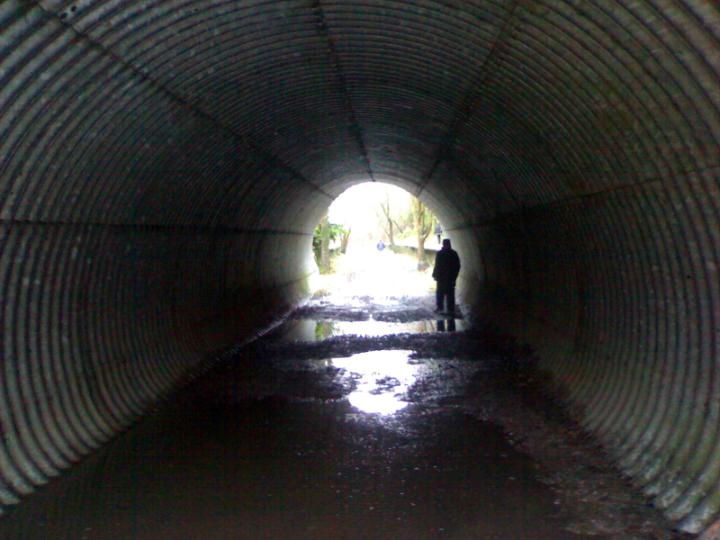
BELOW: The path of the track bed continuing off towards what was Christ's Hospital and onwards towards Guildford.
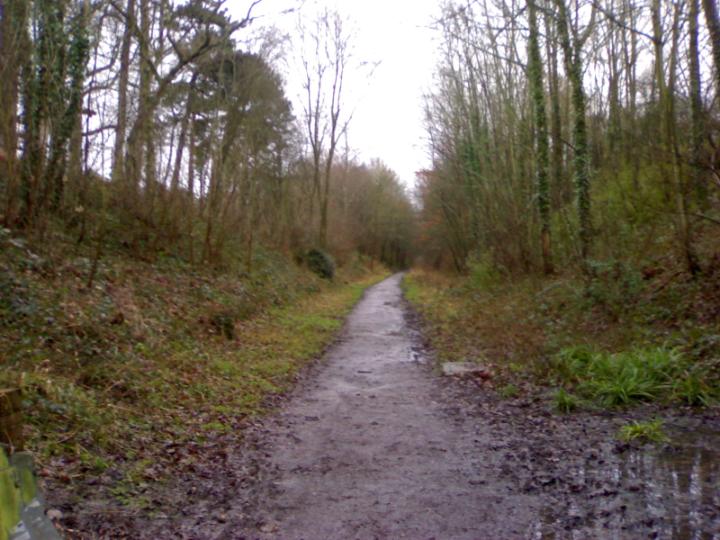
BELOW: Agents Holmbush & Klutz check the coast is clear before bundling the station sign into the boot of the car.
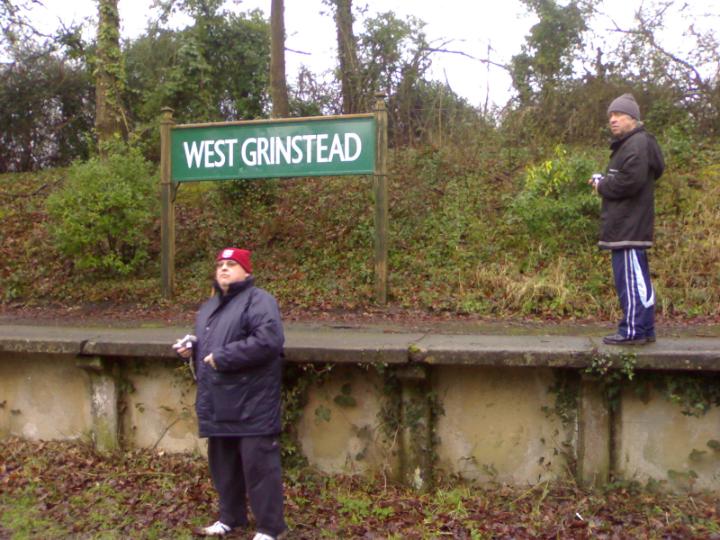
BELOW: As mentioned previously in this text, there are still a lot of original artifacts to be found in this location once you get off the beaten path. Bits of old point linkages, bell cranks and telegraph hardware peep out of the undergrowth. This was a tensioner for cables that would have held a telegraph pole upright: the pole has been removed as the landscape has subsequently changed.
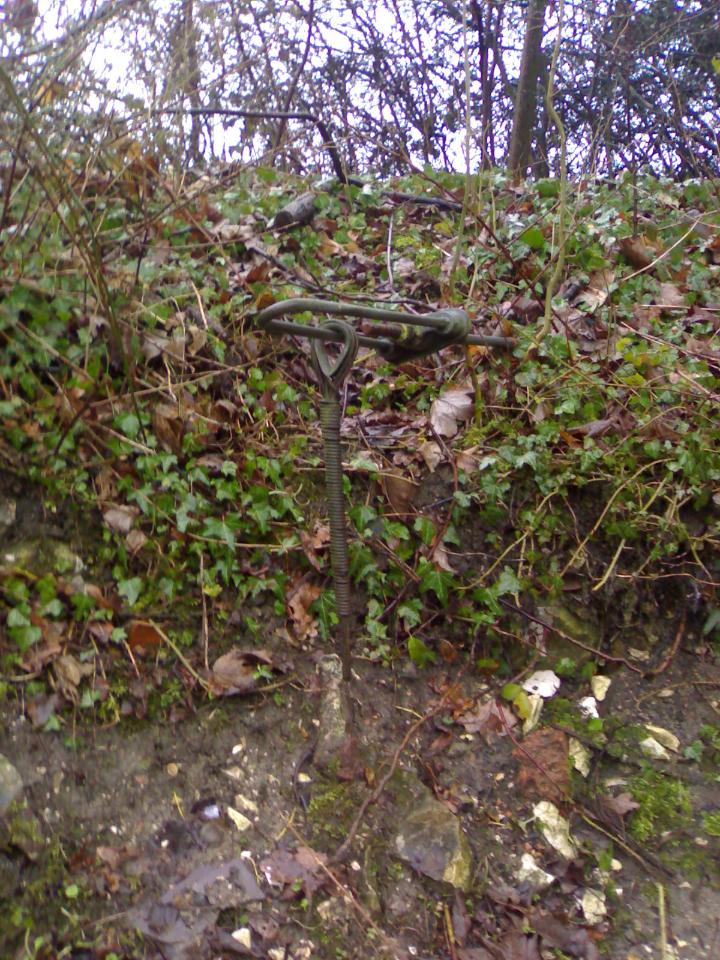
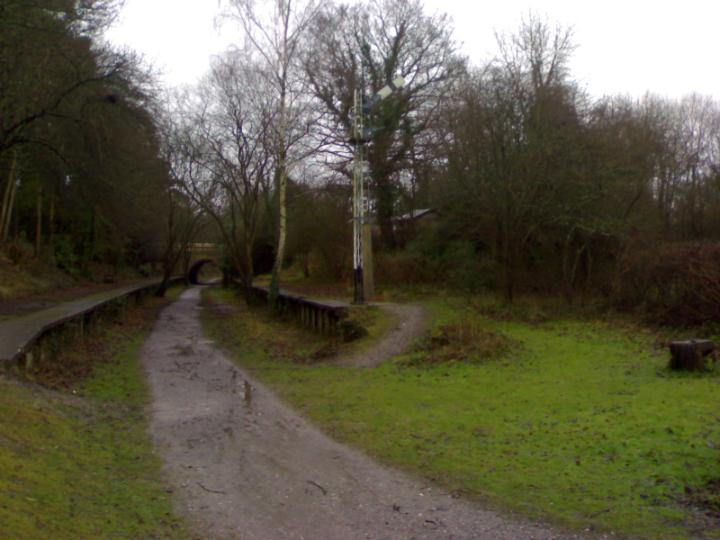
ABOVE & BELOW: The view looking back due south towards Shoreham. The layout of the station as it was is just about discernible thanks to the old photos of the site. A quick consultation with the O/S map helps us to pinpoint the exact positions of the various buildings.
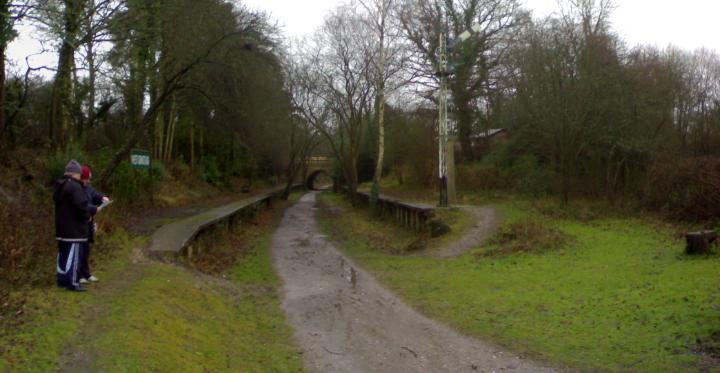
BELOW: This view is looking across the car park (originally the Goods Yard) roughly South-East. The shape and key features of the Goods Yard can be found with the help of the maps, but the site bears little resemblance in the present day. The platforms of the station proper can be seen to the left of the photo. The Goods Shed would have stood roughly where the pond is in the photo.
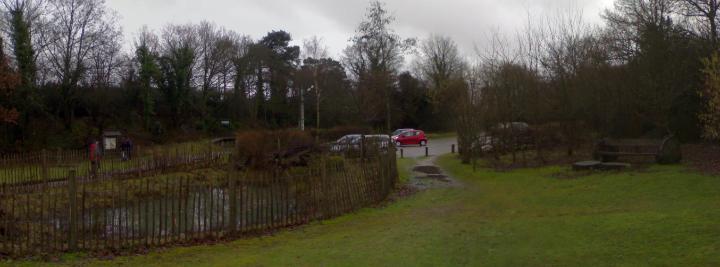
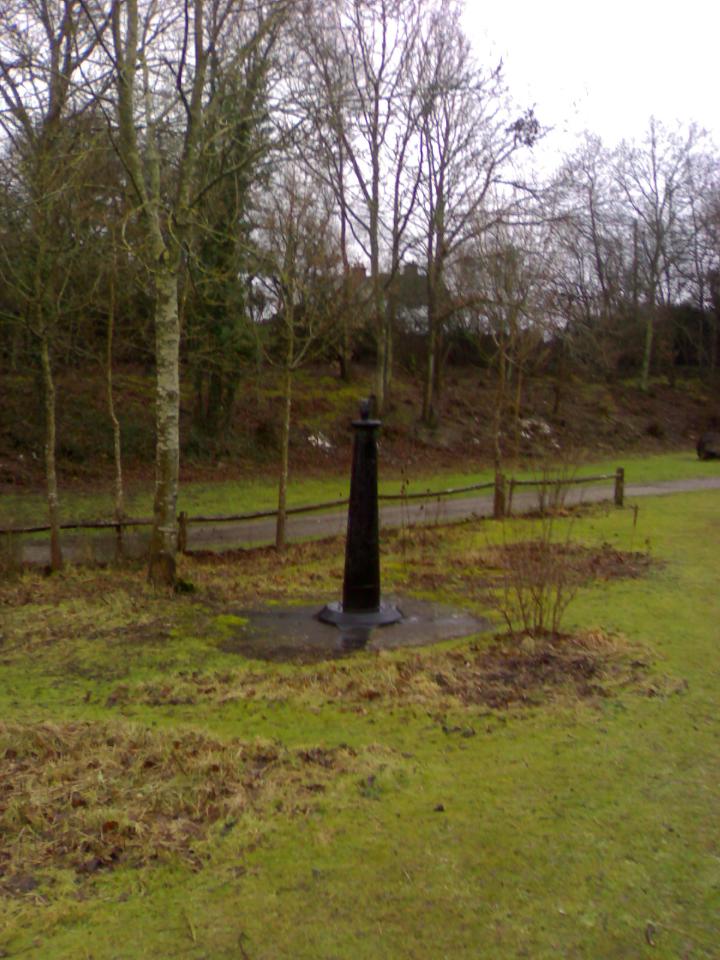
ABOVE & BELOW: There are still a couple of obvious parts of the original station layout existent in the present day: the post seen above is (we think) the remains of a goods crane - it would agree with the old map of the location.
The curious little post seen BELOW is a gradient marker, showing the engine drivers of the time how steep the track they were driving on, was likely to be. The numbers indicate how many feet along the train has to travel in order to travel one foot up or down.
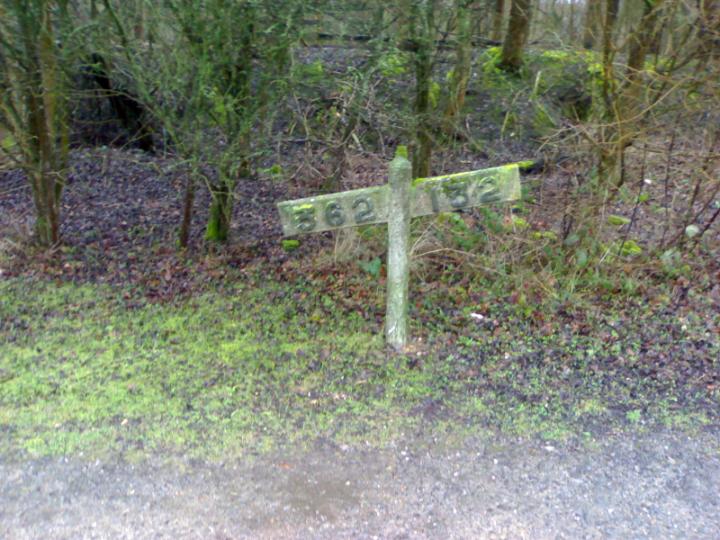
NEXT 3 PHOTOS, BELOW: These three photos show the remains of the old track going to the Cattle Docks, once the scene of wagons shunting and much bleating, mooing and protesting. It is now over sixty years ago that sheep were auctioned at the so-called "Findon" Sheep Fair at West Grinstead. This is where the animals were loaded up and transported from.
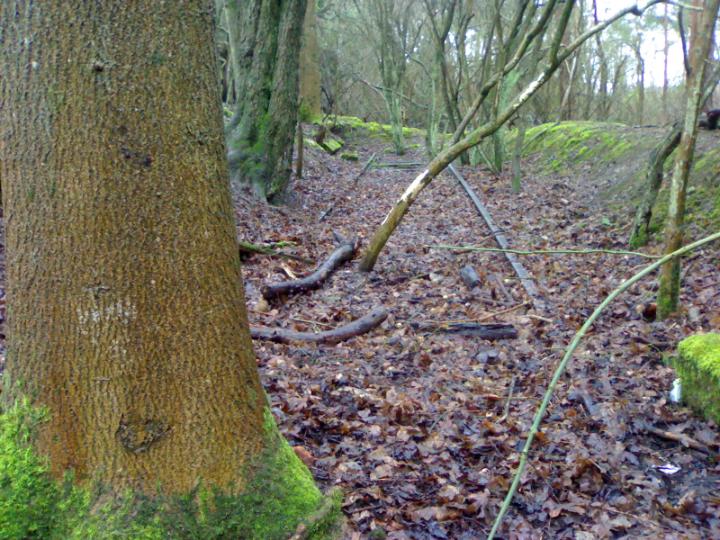
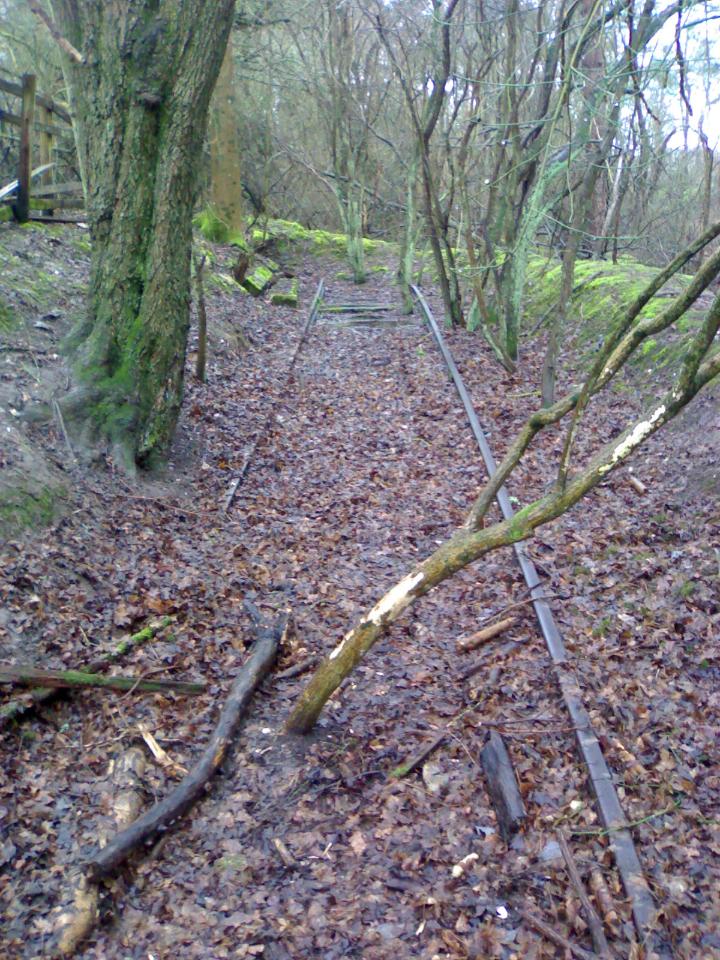
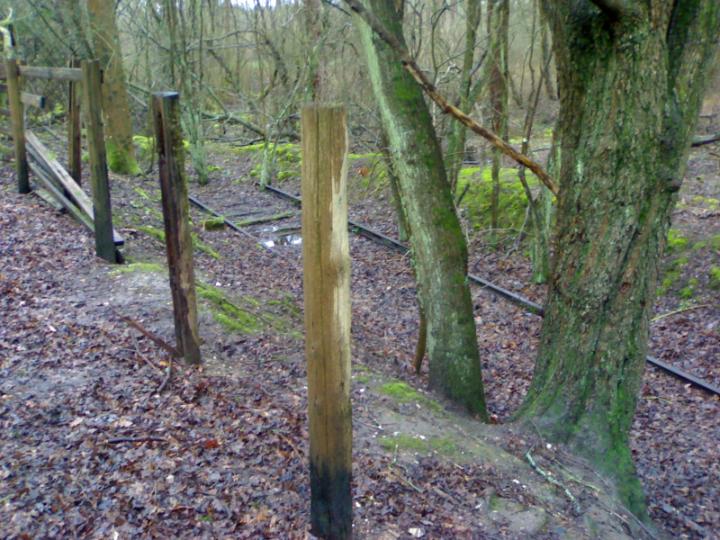
BELOW: We've found hundreds of these on our various travels - this little device is used to gauge land slippage. The top of it is set level with the ground and is used to provide readings as to how much the ground shifts from an original reading. It was especially useful on curves in the track, where an optimal distance between passing trains was needed.
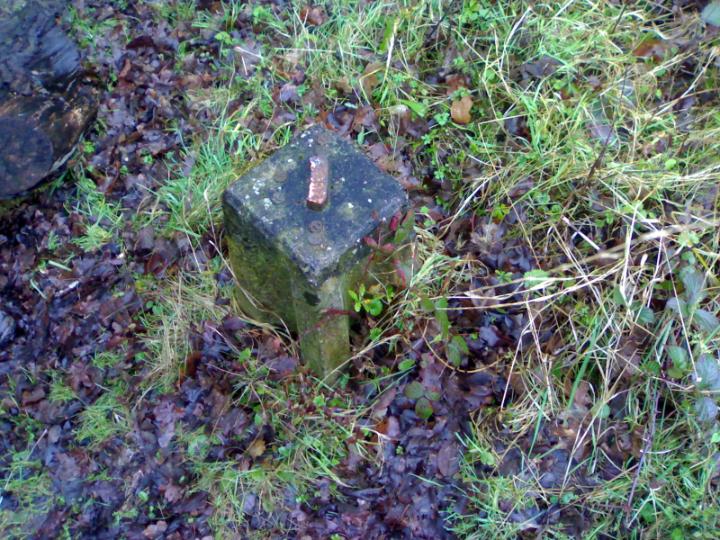
NEXT 4 PHOTOS, BELOW: These photos show the Wildlife Resource Centre in the little dock between the Main Running Lines and the Cattle Docks on the map. Also seen here is the brick edge of the Cattle Dock itself.
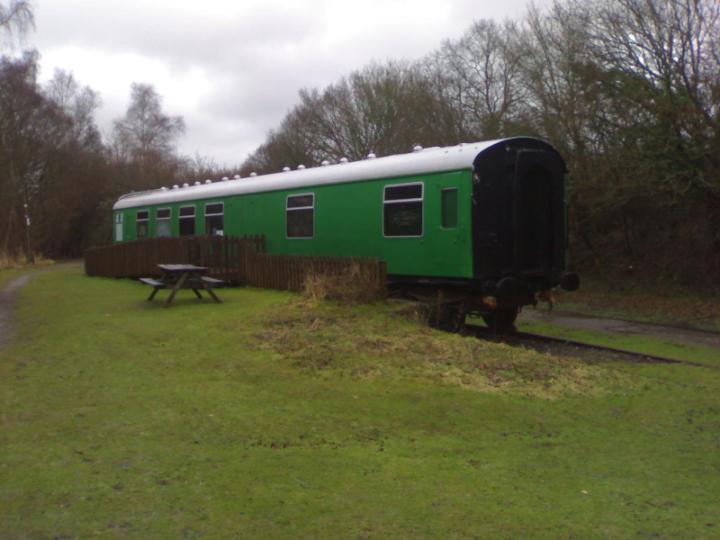

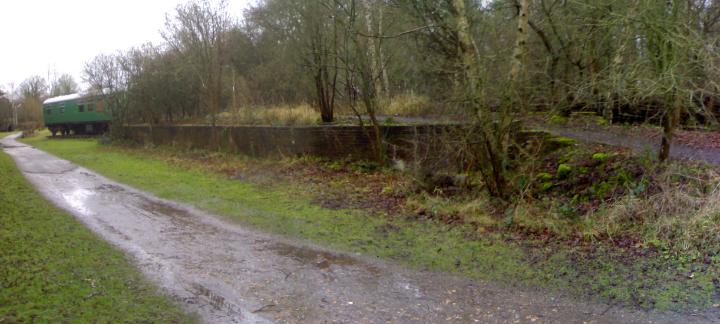
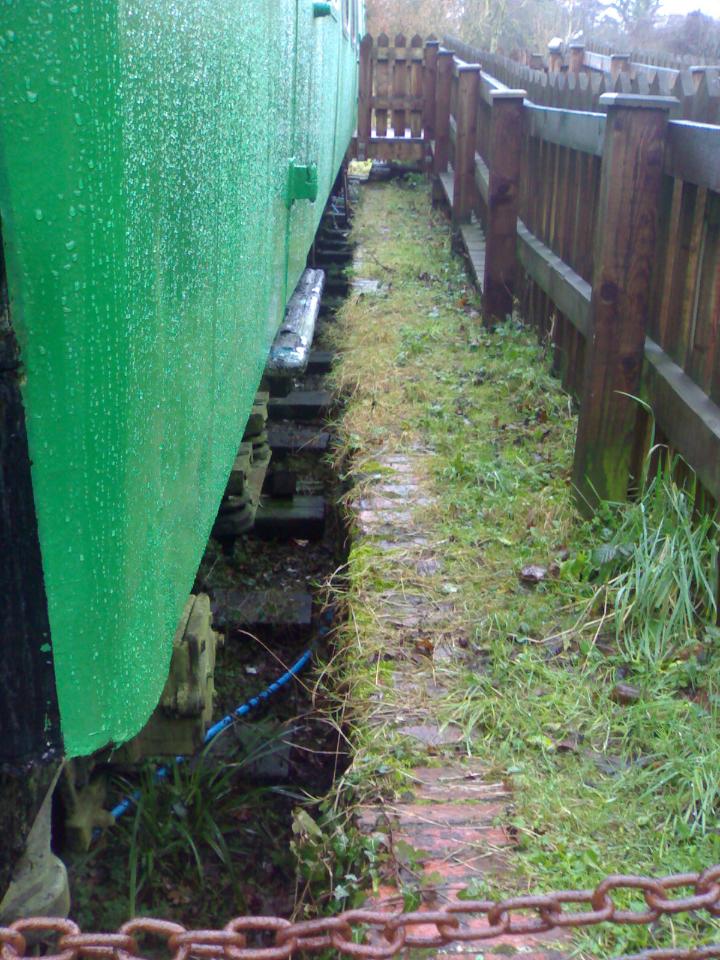
BELOW: It's always nice to find something unexpected in its original location many years after it was forgotten about. It was, however, quite astounding to find lumps of steam coal in the area of the Goods Yard.
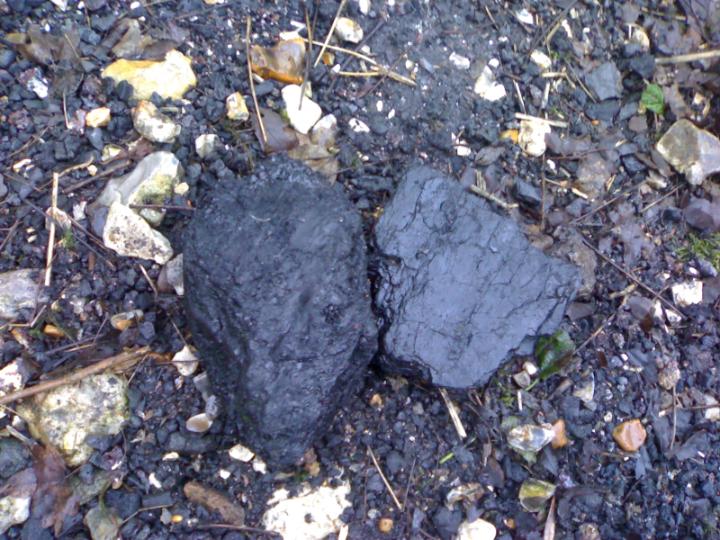
********************